|
The Léon XIII was a steel hulled French cargo sailing ship built by Dubigeon of Nantes, registered Nantes 1902 and named for Pope Leo XIII. She sailed from Portland, Oregon, with a cargo of wheat and was bound for Limerick. Delayed by bad weather off Cape Horn, and after a 158 day journey, she arrived of the Irish coast on September 25th 1907 and was instructed to make for Limerick. On her journey north to the mouth of the Shannon Estuary, the Léon was blown off course by a fierce equinoctial storm and having lost her rudder off Mutton Island, she plied the seas between the Aran Islands and the coast of County Clare for a day and a half, perhaps with the idea of attempting a beach landing. Finally, early in the morning of Wednesday 2nd October 1907, the three-masted fully rigged ship was driven onto a reef off Emlagh Point. An account written by the crew afterwards suggests that they were unaware from the charts of any rocks in this region and so may have regarded the strand (beach) at Quilty as an ideal location upon which to beach their crippled ship. It was on the southern side of the reef that the Léon foundered and ended up wedged between two jagged rocks. Very quickly after hitting the reef the ship broke in two, the lowest portion sinking under the water submerging the supplies of food and fresh water. The crew scrambled up the rigging in an attempt to save their lives as mountainous waves washing over the main deck. Unfortunately the captain, Monsieur Lucas, fell and broke his leg. The wreck was observed from the coast at Quilty and the alarm was raised. The coastguard was not prepared for such an event and lacked the means to carry out a successful rescue in a situation such as this. The coastguard kept a second-rate lifeboat close by but without the rocket apparatus needed and it was considered to be inadequate for the task of saving the crew of the Léon. Nevertheless, the coastguard, under Captain Fletcher, made several unsuccessful attempts to launch the lifeboat, the last attempt ending with the boat being capsized at which point the coastguard was forced to abandon the rescue. The fishermen of Quilty decided to mount their own rescue attempt using their frail fishing craft, traditional Irish currachs, a craft not suited to the sea conditions at that time. The men of Quilty, through their heroic efforts, managed to rescue most of the crew of the Léon. During the rescue one of the currachs capsized and the occupants were rescued by their colleagues. The captain of the Léon and the few remaining men on the wreck were rescued the following day by a naval vessel. During the entire dramatic rescue attempt not one life was lost. Quilty was, at that time, a very poor fishing village without a church. It was decided to launch two appeals, one for the benefit of the fishermen and their families and the second for the building of a church. Sadly, an appeal to the French authorities for a contribution to the funds was not successful. Eventually, land was donated, a church was built and on the 9th of October 1911 it was blessed by the then bishop of Killaloe and dedicated to "Our Lady Star of the Sea." Léon's bell was recovered on the second day of the rescue, but its history was uncertain until it was discovered for sale at an auction house in London. A benefactor purchased the bell and presented it to the church at Quilty during November 1949. It has since been mounted and proudly displayed in the nave of the church. |
© 2018 Philip J. Heydon, I.S.M. and MaritimeQuest All rights reserved |
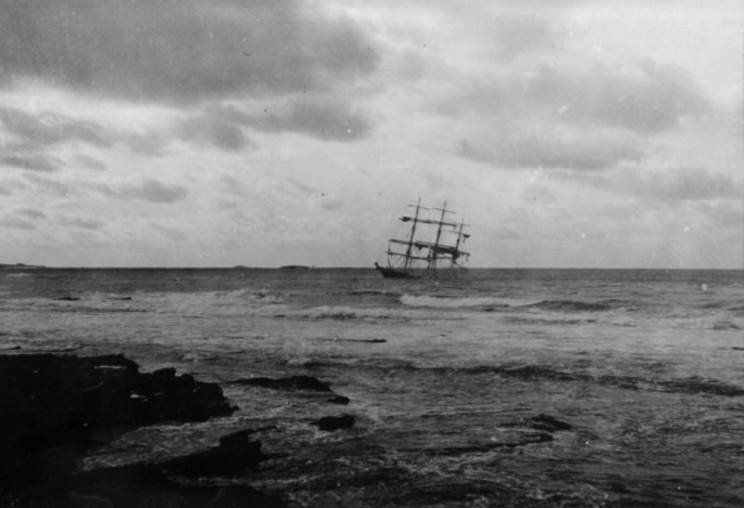 |
The wreck of the Léon XIII. |
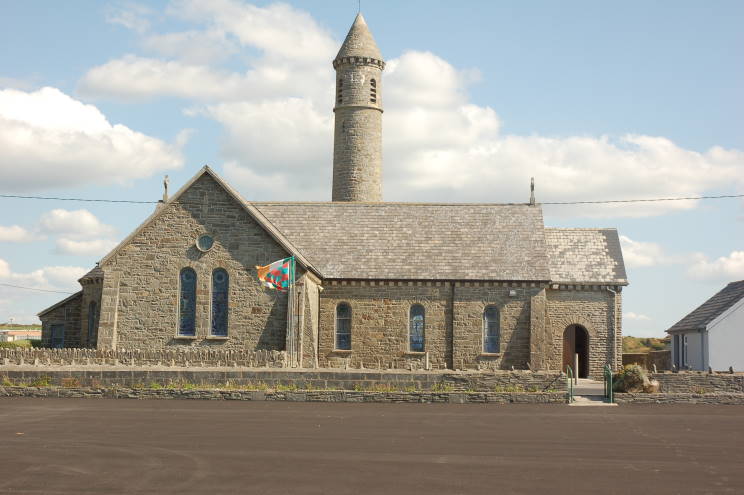 |
Quilty church, Co. Mayo, Ireland. |
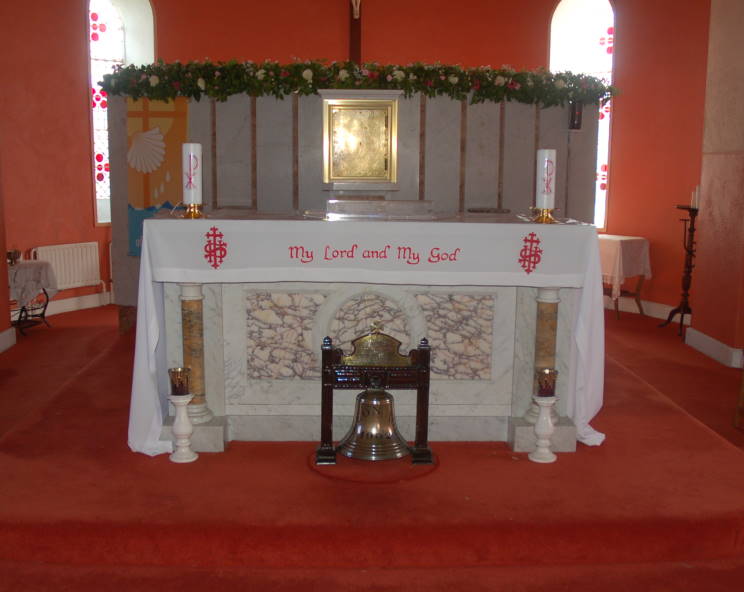 |
The bell from Léon XIII. |
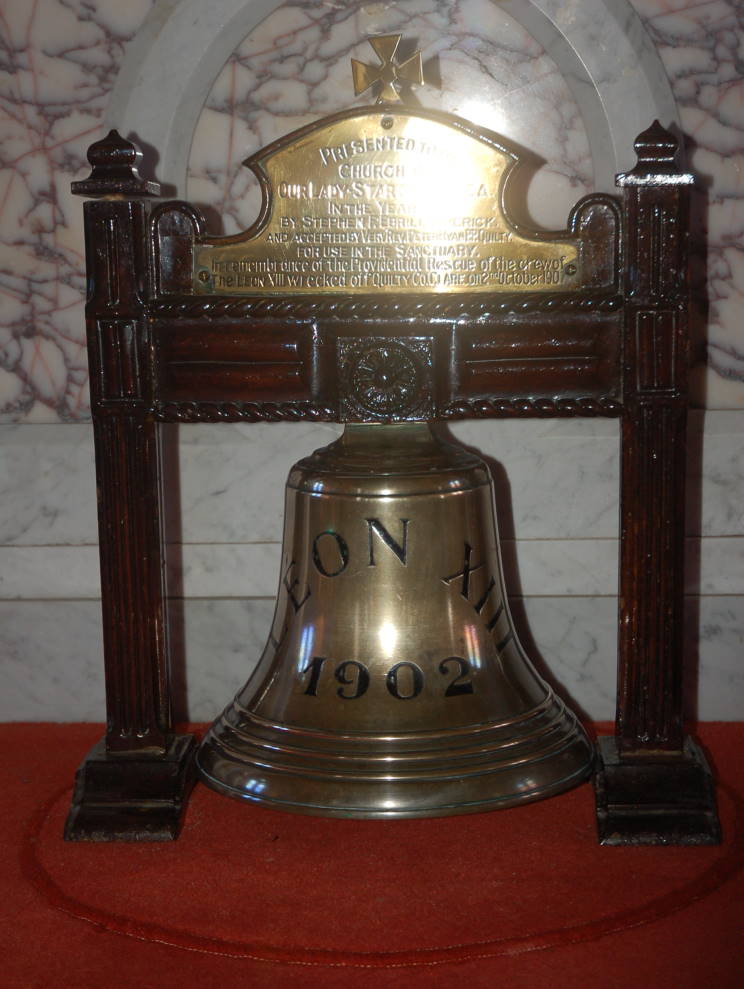 |
The bell from Léon XIII. |
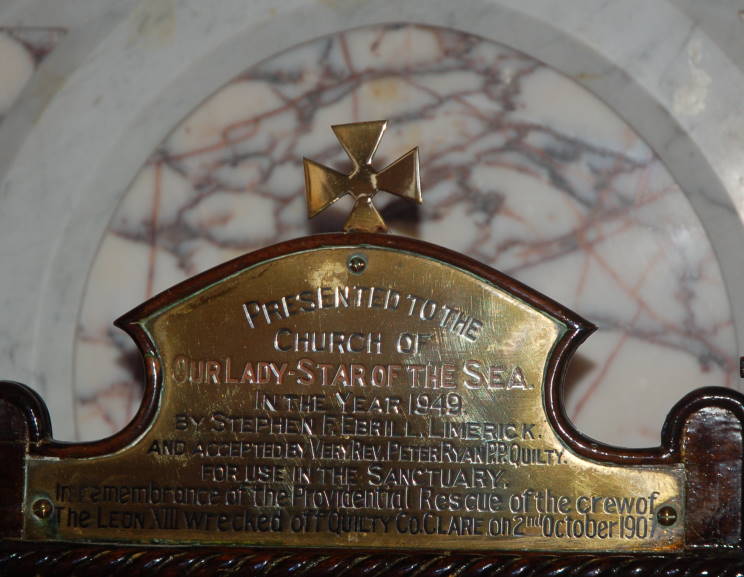 |
Close-up of the inscription on the bell from Léon XIII. |
(Photos courtesy of Philip J. Heydon, I.S.M.) © 2018 Philip J. Heydon, I.S.M. all rights reserved |